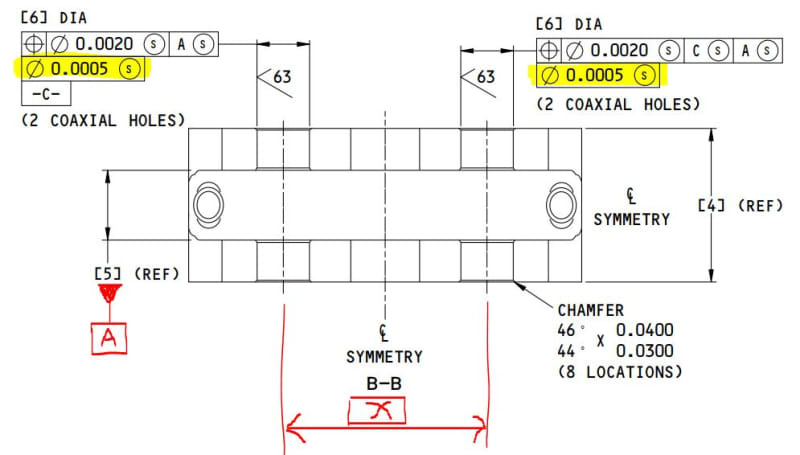Hi All,
Can anyone help me interpret the drawing below. I've no idea what that second FCF row means?
I'm re-drawing the part and am trying to decide if what was originally drawn is the best approach (I've added stuff in red for clarity that's on another view)
I already have issues with "symmetry" being written...
I'm drawing to the newer ASME so have dropped the (S) modifier.
From a design perspective i don't mind if the holes drift as a pattern as long as they remain co-axial and square to datum [A] (bolts go though the holes).

Can anyone help me interpret the drawing below. I've no idea what that second FCF row means?
I'm re-drawing the part and am trying to decide if what was originally drawn is the best approach (I've added stuff in red for clarity that's on another view)
I already have issues with "symmetry" being written...
I'm drawing to the newer ASME so have dropped the (S) modifier.
From a design perspective i don't mind if the holes drift as a pattern as long as they remain co-axial and square to datum [A] (bolts go though the holes).


